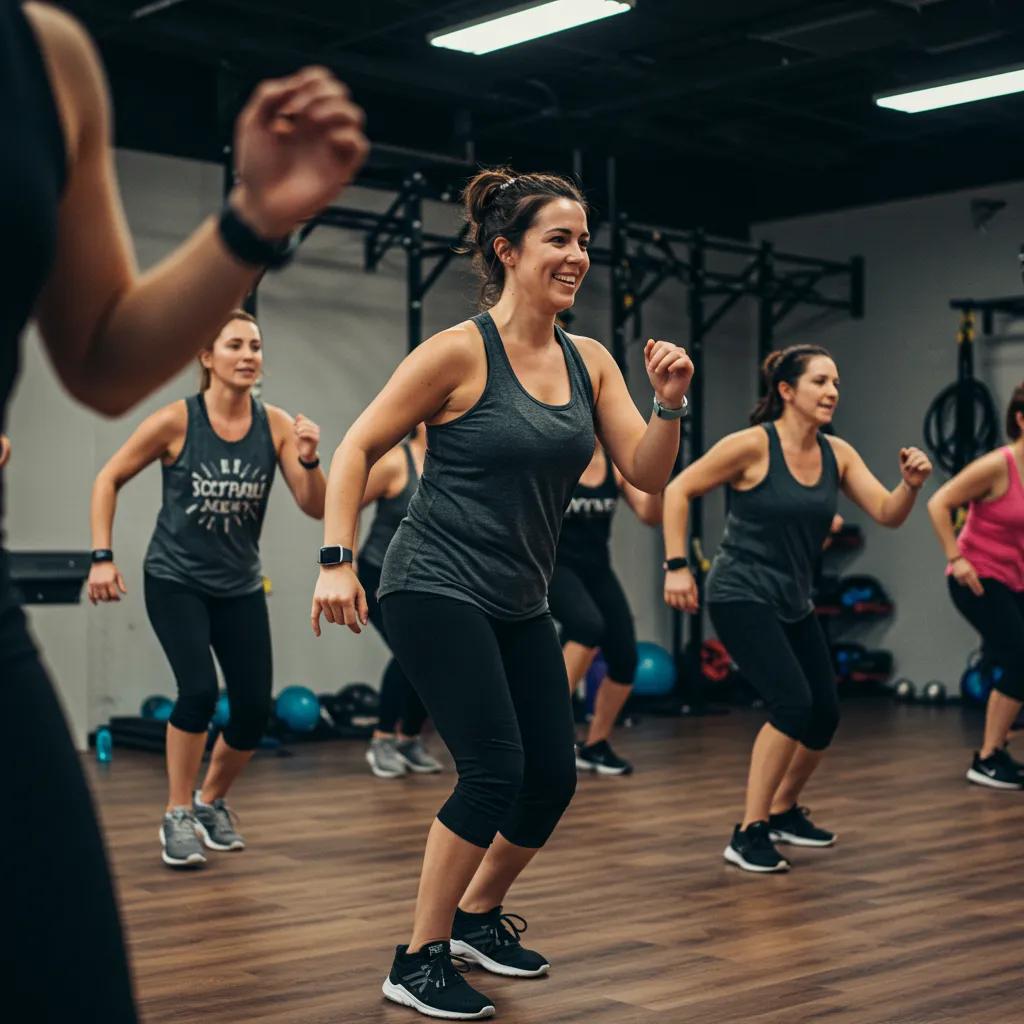Top Workout Classes in Upper East Side NYC to Boost Strength and Confidence

The Upper East Side of New York City offers a dense mix of boutique fitness options and community-driven group classes that can rapidly improve functional strength while boosting self-confidence. This guide helps you identify which workout classes in Upper East Side NYC deliver measurable strength gains and durable confidence through structured progressions, intentional coaching cues, and social accountability. Many residents seek classes that combine progressive resistance, skill mastery, and supportive instruction to translate gym effort into daily competence and assuredness.
Below, you’ll find clear explanations of strength-focused formats, the social mechanisms behind group fitness, how HIIT and mind-body modalities complement one another, and a practical checklist for choosing the best class for your goals. Throughout the article we’ll compare class types by both physical benefits and psychological outcomes, offer actionable tips for trial classes, and highlight small-group training models (including the small-group fitness classes used by some studios outside NYC) as a template for maximizing results.
What Are the Best Strength Training Classes in Upper East Side NYC?
Strength training classes emphasize progressive overload, compound movements, and coached technique to safely increase muscle force and functional power. These classes work by systematically increasing mechanical load and neuromuscular demand so participants experience hypertrophy and neural adaptation, which translate into improved daily strength and confidence from measurable progression. When choosing a strength class in UES, prioritize programs with clear progression plans, varied equipment (barbells, kettlebells, sleds), and small-group coaching that corrects form. The next sections explain how these mechanisms produce physical power and confidence and what to check when evaluating local studios.
How Do Strength Training Classes Improve Physical Power and Confidence?

Strength classes increase physical power through hypertrophy and improved motor unit recruitment, which together raise output during lifts and functional tasks. Neuromuscular adaptations—better synchronization of muscles and faster force production—reduce effort for everyday activities and foster visible progress, an important driver of self-efficacy. Psychologically, structured progression provides mastery experiences and objective metrics (load, reps, movement quality) that strengthen confidence as milestones are reached. Recent research and practical coaching both show that routine tracking and incremental load increases produce faster perceived competence, which supports adherence and continued improvement.
Progressive Overload in Resistance Training
Progressive overload is a principle of resistance training exercise program design that typically relies on increasing load to increase neuromuscular demand to facilitate further adaptations. However, little attention has been given to another way of increasing demand—increasing the number of repetitions. Progressive overload without progressing load? The effects of load or repetition progression on muscular adaptations, D Plotkin, 2022
Which UES Gyms Offer Expert-Led Strength Training Programs?
Look for studios that advertise certified strength coaches, small class sizes, and programming that cycles through phases (strength, hypertrophy, conditioning) to ensure balanced development. Trainer credentials such as national certifications and experience with periodized plans are proxies for safe, effective programming; equally important are class ratios that allow hands-on coaching and individualized regressions. Many effective strength programs use wearable tech or simple performance logs to quantify progress, which reinforces confidence through visible gains. Testing for these attributes during an introductory session reveals whether the studio will support long-term strength and self-assuredness.
Which Group Fitness Classes in Upper East Side NYC Build Community and Confidence?

Group fitness classes build community and confidence by pairing structured workouts with social accountability and positive instructor feedback, which increases effort and adherence. Group settings allow social modeling—seeing peers progress—and create regular touchpoints for encouragement and shared goals, both of which raise motivation and perceived competence. Below are common group features that foster belonging, and practical markers to spot inclusive, confidence-building classes when you try one.
- Community features that foster confidence include shared milestones, partner or team drills, and visible progress boards.
- Instructor behaviors that build self-esteem include individualized scaling options, public praise for effort, and clear cueing.
- Studio practices that support newcomers include structured onboarding classes, trial offers, and opportunities to meet other members.
Group fitness typically pairs social reinforcement with measured challenges that allow participants to experience incremental wins. Choosing a class with a visible community and coaching that scales work to individual levels will accelerate both performance gains and social confidence.
How Do Group Fitness Classes Foster Motivation and Self-Esteem?
Group classes foster motivation through routine, shared goals, and social proof; seeing similar peers complete tough workouts normalizes effort and raises expectations of personal success. Instructors who provide skill progressions and constructive feedback produce mastery experiences that directly increase self-esteem and perceived capability. Accountability loops—regular class schedules, check-ins, and partner drills—help participants maintain consistency, and consistency is the primary driver of both physical strength and psychological resilience. When classes intentionally create opportunities for small achievements, participants gain confidence that generalizes beyond the studio.
What Types of Group Classes Are Popular in UES for Strength and Confidence?
Several group formats on the Upper East Side match different goals: bootcamp-style classes combine strength and cardio for rapid conditioning, spin and cycling focus on power and grit, dance-based classes build coordination and presence, and barre emphasizes posture and muscular endurance for refined strength. Each format produces confidence differently—bootcamp through repeated intensity and mastery, cycling through measurable power outputs, and barre through improved posture and body awareness. Pick the class type that aligns with your immediate goals: overall force and resilience, metric-driven power, or refined core/postural strength.
How Can HIIT and Mind-Body Workouts Boost Strength and Confidence in UES?
HIIT (high-intensity interval training) and mind-body workouts (yoga, Pilates, barre) provide complementary pathways to strength and confidence: HIIT drives power, metabolic conditioning, and mental resilience, while mind-body modalities develop core stability, balance, and focused presence. Combining these modalities increases functional strength and improves bodily awareness, creating a feedback loop where physical competence reinforces internal confidence. The table below summarizes typical class types, primary strength benefits, confidence-related outcomes, and recommended weekly frequency for balanced development.
| Class Type | Strength Benefit | Confidence/Mental Benefit |
|---|---|---|
| HIIT/Circuit | Muscular endurance, power output | Builds resilience and measurable performance markers |
| Pilates (reformer/megaformer) | Precision core activation, posture | Enhances body awareness and quiet confidence |
| Yoga (power/vinyasa) | Functional strength through bodyweight control | Improves focus, balance, and stress resilience |
| Barre | Muscular endurance and tone, small-muscle strength | Boosts posture, poise, and movement confidence |
What Are the Strength and Confidence Benefits of HIIT Classes in Upper East Side?
HIIT sessions build muscular endurance and anaerobic power through repeated high-effort intervals that increase neuromuscular recruitment and metabolic resilience. These classes also provide quick, trackable metrics—rounds completed, reps, interval times—that create immediate feedback and visible progress, which supports confidence. Typical programming mixes sprints, kettlebell circuits, and bodyweight strength sequences with short rests, and most participants notice improvements in stamina and perceived toughness within a few weeks. For best results, combine HIIT two to three times per week with recovery and technique-focused sessions.
Progressive Overload Protocols for Strength and Muscle Mass
The aim of this study was to compare the effects of progressive overload in resistance training on muscle strength and cross-sectional area (CSA) by specifically comparing the impact of increasing load (LOADprog) versus an increase in repetitions (REPSprog). We used a within-subject experimental design in which 39 previously untrained young persons (20 men and 19 women) had their legs randomized to LOADprog and REPSprog. Outcomes were assessed before and after 10 weeks of training. Muscle strength was assessed using the one repetition maximum (1RM) test on the leg extension exercise, and the CSA of the vastus lateralis was assessed by ultrasonography. Both protocols increased 1RM values from pre (LOADprog: 52.90±16.32 kg; REPSprog: 51.67±15.84 kg) to post (LOADprog: 69.05±18.55 kg, REPSprog: 66.82±17.95 kg), with no difference between them (P+>+0.05). Similarly, both protocols also increased in CSA values from pre (LOADprog: 21.34±4.71 cm²; REPSprog: 21.08±4.62 cm²) to post (LOADprog: 23.53±5.41 cm², REPSprog: 23.39±5.19 cm²), with no difference between them (P+>+0.05). In conclusion, our findings indicate that the progression of overload through load or repetitions can be used to promote gains in strength and muscle hypertrophy in young men and women in the early stages of training. Effects of resistance training overload progression protocols on strength and muscle mass, 2024
How Do Yoga, Pilates, and Barre Enhance Core Strength and Self-Assurance?
Mind-body classes cultivate core stability, proprioception, and controlled movement patterns that translate to safer strength work and better posture in daily life. Pilates emphasizes precise activation and progressive loading of the deep core, while yoga adds balance and breath control that calm the nervous system and sharpen concentration under stress. Barre builds muscular endurance and refined alignment that improve appearance and movement confidence. Together, these modalities teach skill mastery and internal focus—both critical drivers of durable self-assurance when paired with resistance training.
| Modality | Core/Strength Mechanism | Practical Frequency |
|---|---|---|
| Pilates | Targeted core engagement, progressive resistance | 1–3× weekly |
| Yoga | Isometric holds, balance, breath control | 1–3× weekly |
| Barre | High-rep muscular endurance for small stabilizers | 1–2× weekly |
What Should You Consider When Choosing the Best Workout Class in Upper East Side NYC?
Choosing the right class requires balancing goals, logistics, and the studio’s ability to provide progress tracking and supportive coaching. Important factors include proximity and schedule compatibility (which enable consistency), price versus programming value, visible trainer expertise, small-group ratios, and a welcoming studio atmosphere that supports beginners. Below is a practical checklist to use when comparing classes during trials, followed by guidance on what to observe during an introductory session.
- Location & Schedule: Choose classes within an easy commute and at times you can consistently attend.
- Price & Value: Confirm the program includes progression and measurable tracking, not just open drop-in sessions.
- Trainer Expertise: Look for coaches who cue technique, provide regressions, and explain progressions.
- Class Size & Format: Prefer small-group formats that allow hands-on correction and individualized scaling.
Use this checklist during trials to quickly gauge if a class supports both strength development and confidence growth. Prioritizing consistency, measurable programming, and coach attention offers the highest probability of sustained results.
Which Factors Affect Your Choice: Location, Price, Schedule, and Trainer Expertise?
Location and schedule are foundational because they determine whether you can build consistent habit—consistency is the single biggest predictor of progress. Price must be evaluated relative to programming quality: transparent periodized plans and progress tracking justify higher costs, while low-cost drop-in models may lack structure. Trainer expertise matters most for safe progression; look for educators who demonstrate clear technique cues, individualized scaling, and session-to-session programming. When comparing options, create a simple rubric scoring these factors to choose the best long-term match for your goals.
How Can Trial Classes and Studio Atmosphere Influence Your Confidence and Results?
Trial classes reveal the studio’s onboarding process, coaching style, and inclusivity—key components that determine early confidence and retention. During a trial, observe whether coaches welcome questions, offer scaled options, and track progress; these signs indicate a studio geared toward long-term growth and empowerment. A five-point trial checklist to assess a studio includes warm welcome, coach attention, clear cues, scalable options, and community feel—each element directly influences whether you’ll feel capable and motivated after the first sessions. Committing to a studio that nails these aspects accelerates both strength gains and the internal confidence that comes from mastering new physical skills.
Frequently Asked Questions
What should I wear to a strength training class in Upper East Side NYC?
When attending a strength training class, it’s essential to wear comfortable, moisture-wicking clothing that allows for a full range of motion. Opt for supportive athletic shoes designed for weightlifting or cross-training, as they provide stability during exercises. Additionally, consider layering your outfit, as studios can vary in temperature. Accessories like weightlifting gloves or a personal water bottle can enhance your experience. Ultimately, choose attire that makes you feel confident and ready to tackle your workout.
How often should I attend strength training classes for optimal results?
For optimal results, it’s generally recommended to attend strength training classes two to three times per week. This frequency allows your muscles to recover while still providing enough stimulus for growth and strength gains. Incorporating rest days is crucial to prevent overtraining and injury. Additionally, consider mixing in other workout modalities, such as cardio or flexibility training, to create a balanced fitness routine that supports overall health and well-being.
Are there age restrictions for participating in strength training classes?
Most strength training classes in Upper East Side NYC welcome participants of all ages, but age restrictions may vary by studio. Many facilities offer classes specifically designed for different age groups, including youth, adults, and seniors. It’s essential to check with the studio regarding their policies and class offerings. Additionally, instructors can often provide modifications to accommodate varying fitness levels and ensure a safe and effective workout experience for everyone.
Can beginners join strength training classes, and what should they expect?
Yes, beginners are encouraged to join strength training classes! Most studios offer introductory sessions or beginner-friendly classes that focus on foundational movements and techniques. Expect a supportive environment where instructors provide guidance on proper form and scaling options. Initially, you may feel challenged, but with consistent attendance, you’ll build strength and confidence over time. Communicate your experience level to the instructor, who can tailor the session to meet your needs.
What are the benefits of combining strength training with mind-body workouts?
Combining strength training with mind-body workouts, such as yoga or Pilates, offers numerous benefits. This combination enhances core stability, flexibility, and body awareness, which can improve overall strength performance. Mind-body modalities also promote mental focus and stress relief, creating a balanced approach to fitness. By integrating these practices, you can develop a well-rounded fitness routine that not only builds physical strength but also fosters emotional resilience and self-confidence.
How can I track my progress in strength training classes?
Tracking progress in strength training classes can be achieved through various methods. Many studios provide performance logs or wearable technology to monitor metrics like weight lifted, repetitions, and workout intensity. Additionally, setting specific, measurable goals can help you stay focused and motivated. Regularly assessing your performance, such as testing your one-rep max or tracking improvements in endurance, will provide tangible evidence of your progress and boost your confidence as you achieve milestones.
Conclusion
Participating in strength training and group fitness classes in the Upper East Side can significantly enhance both physical power and self-confidence through structured progress and community support. By choosing classes that emphasize expert coaching and measurable outcomes, you can experience tangible improvements in your strength and overall well-being. Embrace the opportunity to explore various class formats that align with your personal goals and preferences. Start your journey towards greater strength and confidence by checking out our recommended classes today.

